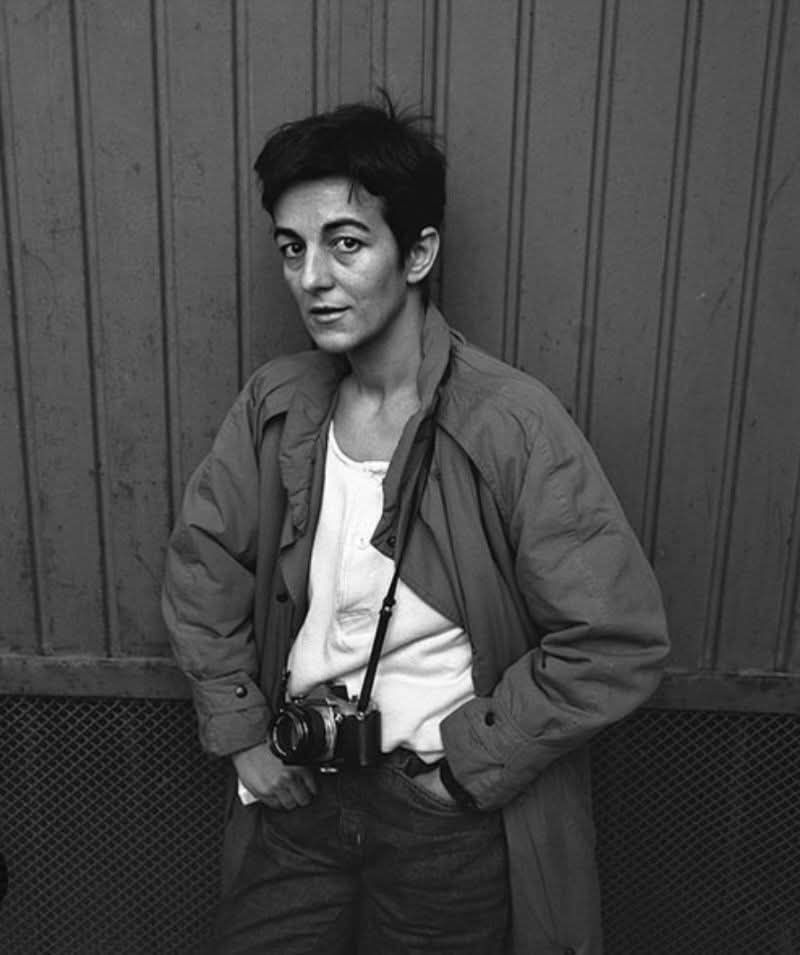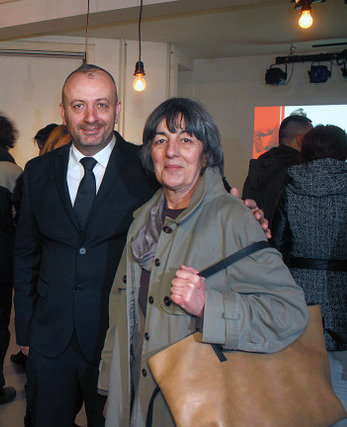OBITUARY
Goranka Matić
(1949 – 2025)

Does Yugoslavia still exist thirty-five years after its formal dissolution and exactly eighty—or perhaps even over a hundred—years after its creation? In a way, yes, in every individual death of those who outlived it, yet once stood as pillars of its social fabric and communal life. From the recently deceased, perhaps its greatest basketball player, Dražen Dalipagić, and Goranka Matić, whom we bid farewell to here, to the eventual demise of Hotel Yugoslavia as a tangible landmark.
The challenge of any obituary written today lies in its unintended temporal overlap with the ongoing student protests across Serbia, commanding public attention. One thing is sure: no matter how significant or extensive they may be, they will not hold the timeless documentary value that Goranka once masterfully captured in similar historical moments in the clash of new digital technologies and drones.
Unfortunately, this marks a turning point in understanding the transformation of our era. Domestic and global print media have lost photojournalism as a genre of visual reporting. To some extent, the only remnant is the survival of caricature, which endures only as long as its masters do.
Goranka Matić was a benchmark of kind-hearted openness and an absence of vanity. We first met when, as the creative director of the cultural centre Parobrod, I set out to introduce a biographical pop-up tribute within the exhibition programme dedicated to figures like herself—those she had photographed throughout their careers, such as Vlada Divljan and Dragan Nikolić.
Frustrated by the inaccessibility of the photo archives of once-great publishers Borba and Politika, I was pleasantly surprised—indeed, almost thrilled—by her generosity. All it took was a quick trip to her place in Block 23, bringing along a hard drive, and she would meticulously organise and provide everything I needed.
During the 1980s, Goranka was the unofficial photographic biographer of Belgrade’s entire New Wave music scene, from Idoli‘s first concert at the Student Cultural Centre (SKC) to her editorial work on Radmila Stanković’s monograph Dragan Nikolić – A Gentleman Rogue.

Goranka Matić and Tomislav Peternek (who passed away in 2023) were arguably the most significant Serbian-Yugoslav photographers of the second half of the 20th century. Yet, while Annie Leibovitz was recently inducted into the French Academy of Arts, there was no place for Peternek in the Alley of the Greats, nor was Goranka ever seriously considered by her peers as a potential future member of the Serbian Academy of Sciences and Arts (SANU). Their greatness lies in their unique ability to fuse artistic impact with documentary photography.
While Peternek captured rural provinces and the battlefields of the 1990s, Goranka immortalised the unrepeatable urban spirit of Belgrade in its golden era of the 1980s and, later, the anti-war city of civic protests in the 1990s. Peternek was the photo editor at NIN, while Goranka held the same role at Vreme. Her illustrious career, perhaps the only one celebrated with identical retrospectives at the Museum of Contemporary Art in Belgrade and Zagreb, began with the anthropological lexicon Days of Pain and Pride. This series captured shop windows across the capital, displaying trades that no longer exist, all decorated with Tito’s portrait in mourning after his death on 4 May 1980.
Beyond the Idoli and the Paket Aranžman bands (Šarlo Akrobata, later EKV), Goranka documented much more—her photographs remain the defining visual record of that time and those people. It is reasonable to assume that most images from that era circulating the internet today belong to her portfolio. However, she never claimed exclusive rights nor pursued legal action over their use or sharing.
Moreover, Goranka was the unofficial yet definitive portraitist of the crossover between public life and the arts—covering theatre, literature, politics, and other creative fields. Her authenticity lay in a unique blend of spontaneity and staged composition—an oxymoron, perhaps, yet one she mastered. With her black-and-white lens, she did for photography what Uroš Predić and Paja Jovanović did for painting at the start of the last century. One day, her portraits—like theirs—will illustrate the national history and the evolution of pop culture.
Born in 1949 in Maribor, Goranka was an art historian in the legendary renaissance Student Cultural Centre (SKC) and later, in the 2000s, an editor at Politika and RTS. In our chronically divided society, there were no opposing sides when it came to her—everyone felt her passing as a personal loss and a family tragedy. I cannot recall anyone in recent memory who, like her, brought us together in mourning at the New Cemetery—united in pain and pride at having been her contemporaries.
By: Zlatko Crnogorac